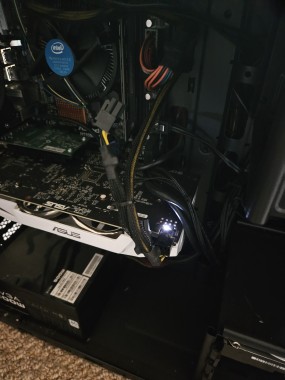What do I need to trouble shoot second hand desktop computer? And how? ( sh.itjust.works )
[Resolved!]
I traded my cousin some really expensive RAM that I happened accross for his old desktop, that he put his graphics card into that he swapped from his newer computer. If I plug the desktop into the wall and try to turn it on nothing happens. If I open it up I can see that the where the wire from the power supply plugs into the graphics card there Is a little light on. So clearly some power is getting somewhere...
How do I go about trouble shooting this, and what tools do I need? I assume at minimum a multi meter? Not really sure what to do, it's been decades the last time I built a computer.
Board says "Asrock H110M-HDS"
Edit: Attached a Pic and noticed the light is actually on the graphics card, not motherboard. Added addtl info.
Update: So now all of the sudden the fan spins. I am at a loss as to why it spins now, as I haven't actually really done anything. I ordered a speaker for the mobo, so waiting for that.
Final update: It works! I apparently had either a bad monitor or bad display port cable. But using another monitor with DVI I was able to finally get it to fully boot!
I am not sure what got the fans to eventually work, maybe just a cable was jostled.
I really appreciate all the advice! I definitely know a lot more and feel better equipped to do things with it now.
